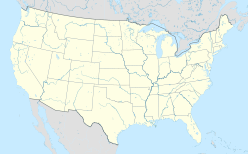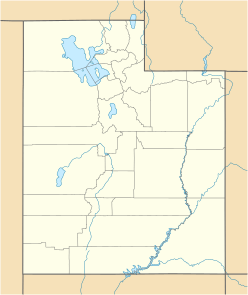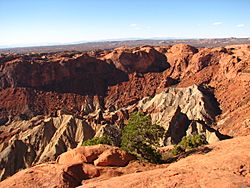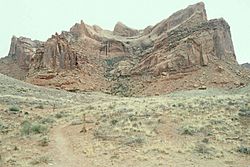Upheaval Dome facts for kids
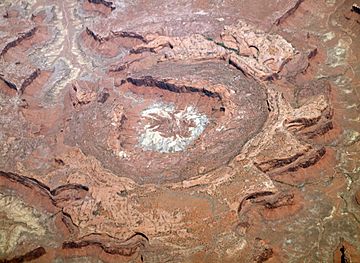
Oblique aerial view of Upheaval Dome, 2012
|
|
| Impact crater/structure | |
|---|---|
| Confidence | Confirmed |
| Diameter | 10 km (6.2 mi) |
| Age | <170 Ma Middle Jurassic or younger |
| Exposed | Yes |
| Drilled | Yes |
| Location | |
| Location | Canyonlands National Park |
| Coordinates | 38°26′13″N 109°55′45″W / 38.43694°N 109.92917°W |
| Country | |
| State | Utah |
| District | San Juan County |
Upheaval Dome is a mysterious geological feature in San Juan County, Utah, United States. It's located in Canyonlands National Park, about 22 miles (35 km) southwest of Moab, Utah. For a long time, scientists debated how this strange structure was formed. Some thought it was a giant crater made by a meteorite hitting Earth. Others believed it was a salt dome, which is a hill formed when salt pushes up from deep underground.
Contents
What is Upheaval Dome?
Upheaval Dome is about 10 kilometers (6.2 miles) wide. It looks like a huge circular bowl with rings of light and dark brown rock. Scientists believe it is less than 170 million years old. This means it formed during or after the Jurassic Period, which was the time of the dinosaurs!
The rocks in Canyonlands National Park are usually flat or gently sloped. But at Upheaval Dome, the rocks are tilted sharply, almost straight up in some places near the center. This unusual tilting made scientists wonder what caused it.
How Did Upheaval Dome Form?
For many years, there were two main ideas about how Upheaval Dome came to be.
The Salt Dome Idea
One idea was that Upheaval Dome was a salt dome. Imagine a thick layer of salt buried deep underground. Over millions of years, heavy rocks piled up on top of the salt. This pressure could cause the salt, which is lighter than the rocks above it, to slowly push its way up. As the salt pushed up, it would bend and lift the layers of rock above it, creating a dome shape.
The Meteorite Impact Idea
The other idea, which is now widely accepted, is that Upheaval Dome is an eroded impact crater. This means it was formed when a large meteorite crashed into Earth. It's similar to Meteor Crater in Arizona, but much older and worn down by wind and water.
In the 1990s, a team of geologists and seismologists from NASA and the University of Nevada studied Upheaval Dome very closely. They used special equipment to look at the rocks deep underground. Their findings strongly supported the idea that a meteorite caused it.
Then, in 2008, scientists found something very important: shocked quartz. Shocked quartz is a type of mineral that forms only under the extreme pressure of a powerful impact, like a meteorite crash. Finding shocked quartz was strong evidence that Upheaval Dome is indeed an ancient impact crater.
So, the mystery of Upheaval Dome seems to be solved! It's a fascinating example of how powerful events from space can shape our planet.
Gallery


